Abstract
1 Adrenaline, noradrenaline and isoprenaline (5 mug/ml) did not affect the resting tone of the isolated urinary bladder of the guinea-pig. 2 The catecholamines (1-2 mug/ml) inhibited neuronally evoked contractions at various stimulation frequencies; the inhibition was maximum at 2 Hz and minimum at 50 Hz. Isoprenaline produced maximum inhibition. 3 Propranolol (0.5 mug/ml) completely blocked the catecholamine-induced inhibition at all the frequencies employed. The concentration-response curves of isoprenaline at 2, 10 and 50 Hz were characteristically shifted by propranolol (50 ng/ml). Phenoxybenzamine (0.2 mug/ml) was totally ineffective. 4 In some experiments adrenaline significantly raised the tone of the bladder exposed to propranolol; this effect could be blocked by phenoxybenzamine. 5 Acetylcholine-induced bladder contractions were inhibited by adrenaline (2 mug/ml); the inhibition was completely blocked by propranolol (0.5 mug/ml). 6 The results indicate the presence of an inhibitory beta-adrenoceptor and suggest the possibility of an excitatory alpha-adrenoceptor in guinea-pig urinary bladder.
Full text
PDF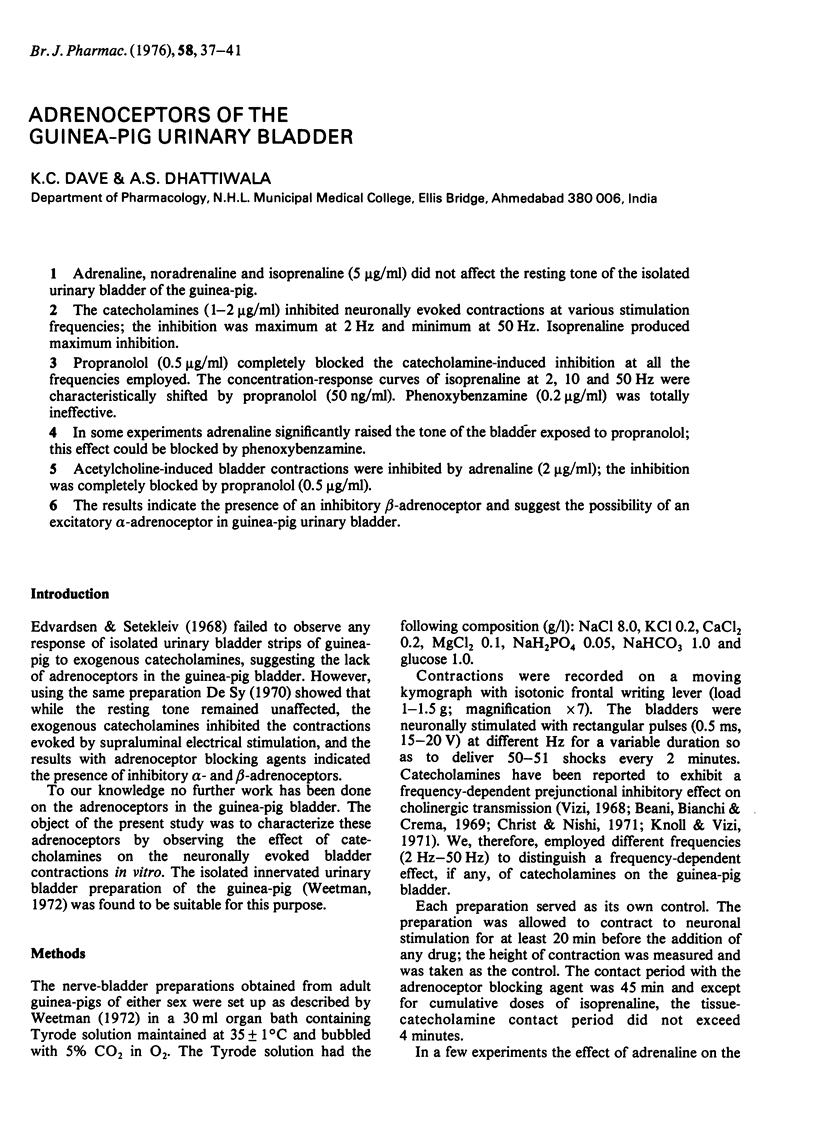
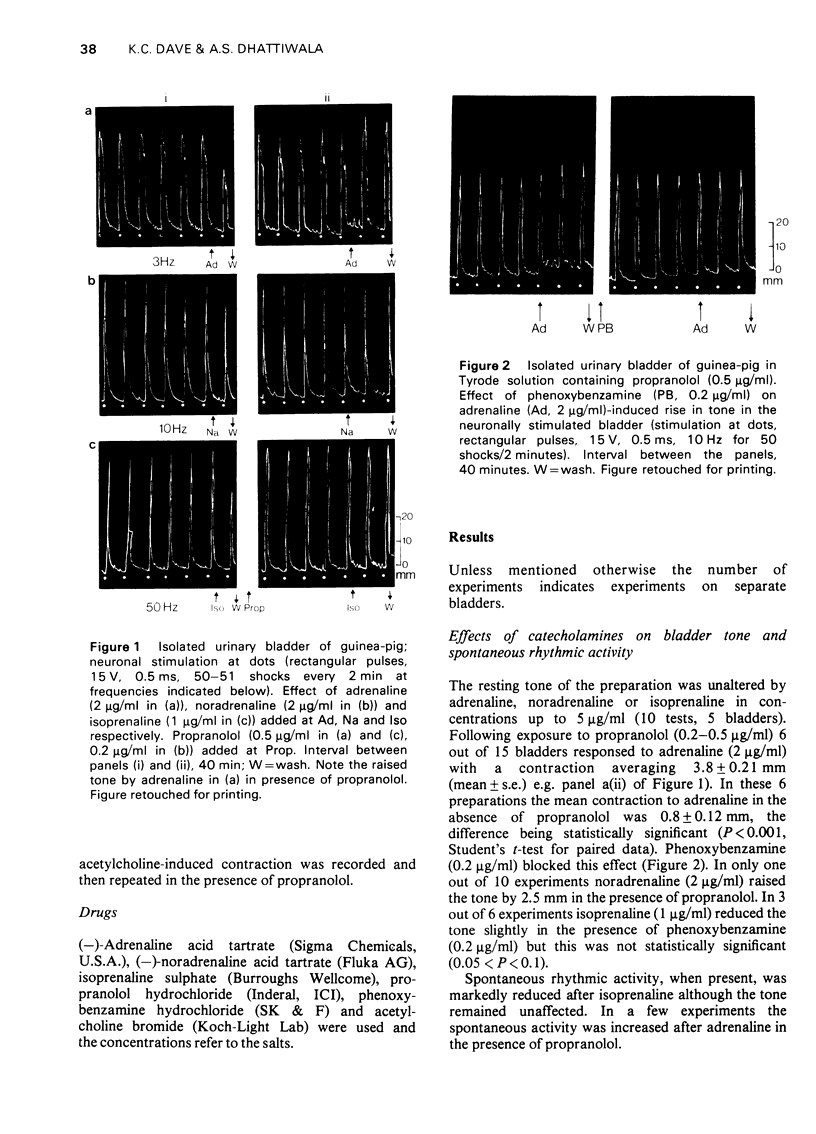
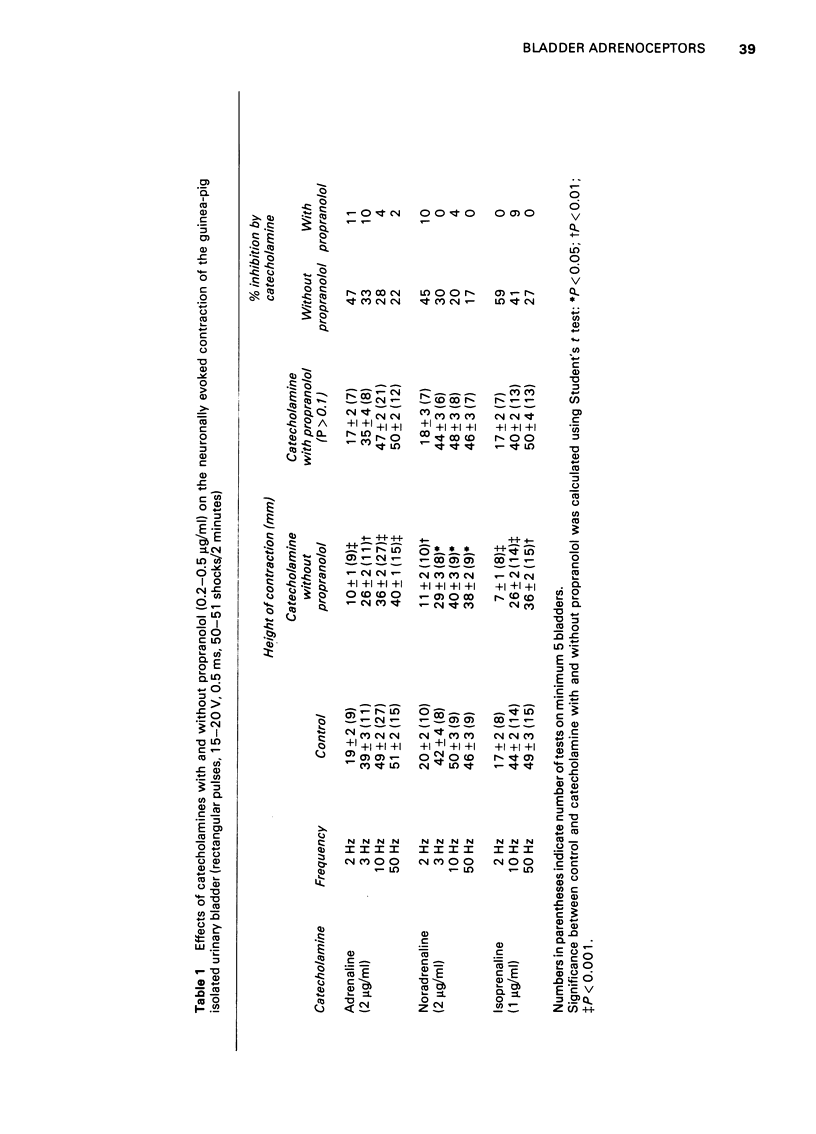
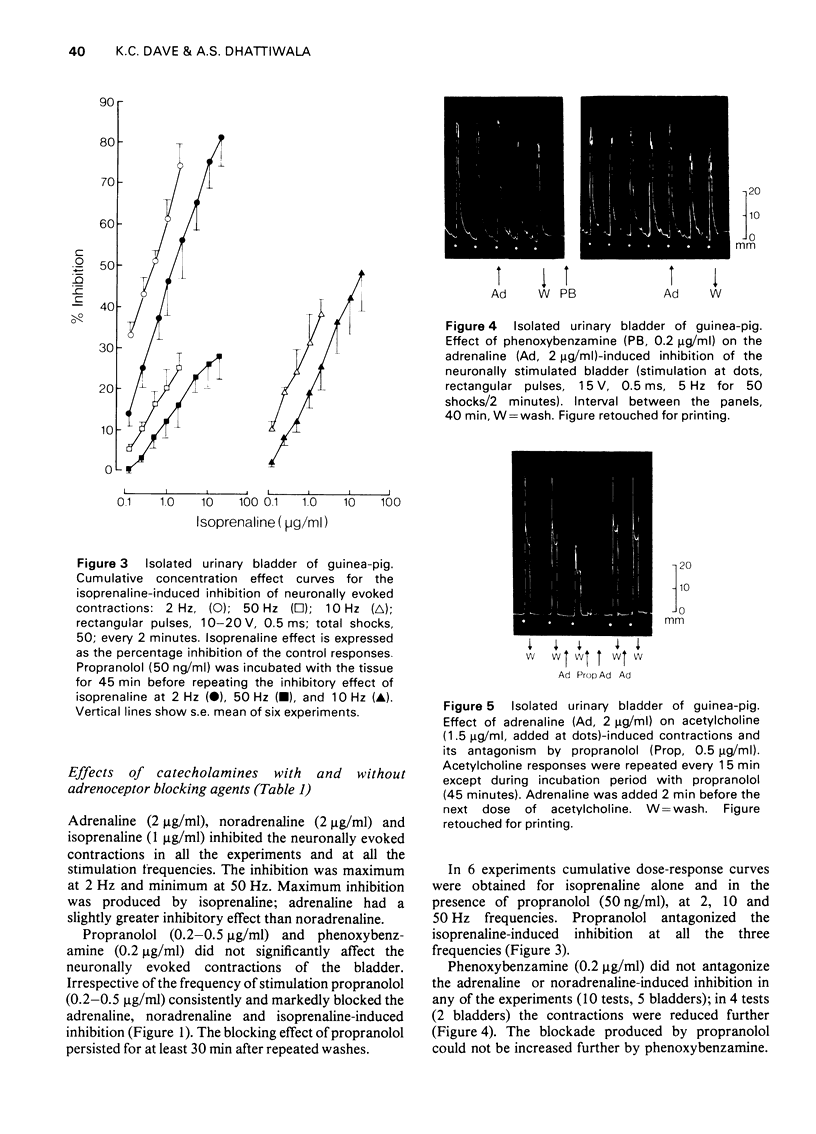
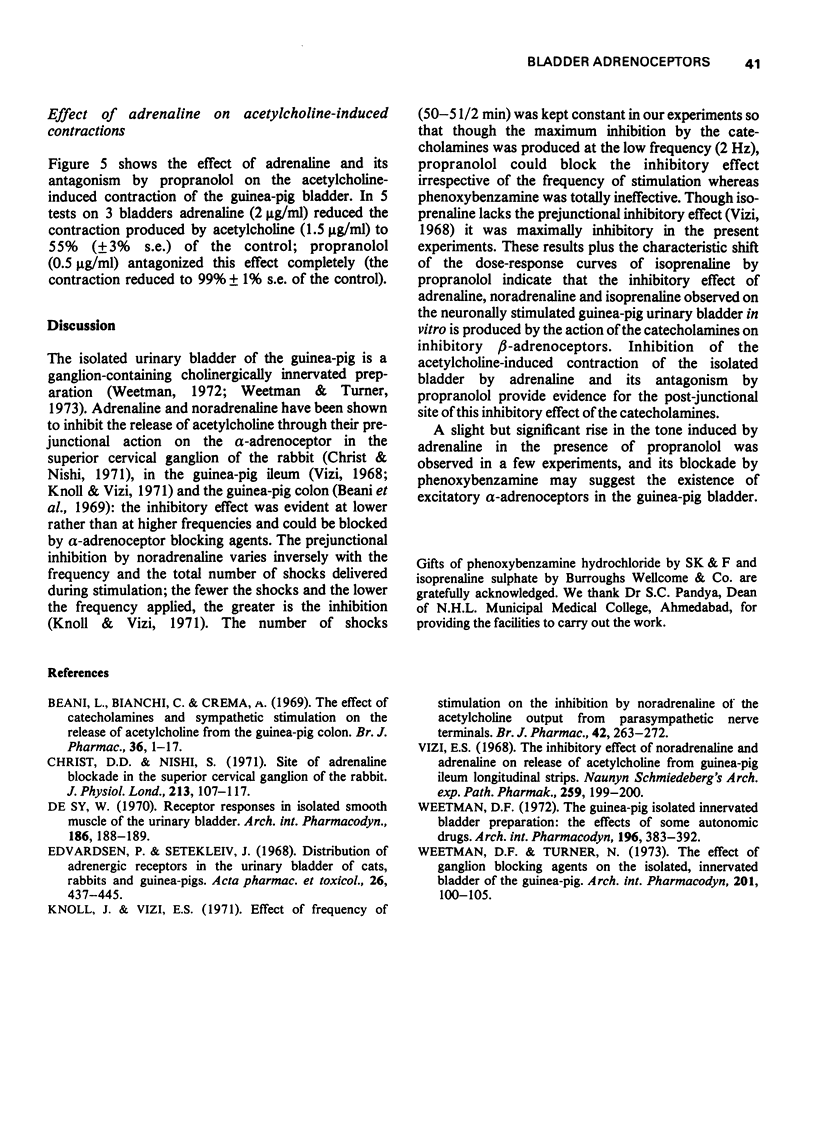
Selected References
These references are in PubMed. This may not be the complete list of references from this article.
- Beani L., Bianchi C., Crema A. The effect of catecholamines and sympathetic stimulation on the release of acetylcholine from the guinea-pig colon. Br J Pharmacol. 1969 May;36(1):1–17. doi: 10.1111/j.1476-5381.1969.tb08298.x. [DOI] [PMC free article] [PubMed] [Google Scholar]
- Christ D. D., Nishi S. Site of adrenaline blockade in the superior cervical ganglion of the rabbit. J Physiol. 1971 Feb;213(1):107–117. doi: 10.1113/jphysiol.1971.sp009371. [DOI] [PMC free article] [PubMed] [Google Scholar]
- De Sy W. Receptor responses in isolated smooth muscle of the urinary bladder. Arch Int Pharmacodyn Ther. 1970 Jul;186(1):188–189. [PubMed] [Google Scholar]
- Edvardsen P., Setekleiv J. Distribution of adrenergic receptors in the urinary bladder of cats, rabbits, and guinea-pigs. Acta Pharmacol Toxicol (Copenh) 1968;26(5):437–445. doi: 10.1111/j.1600-0773.1968.tb00462.x. [DOI] [PubMed] [Google Scholar]
- Knoll J., Vizi E. S. Effect of frequency of stimulation on the inhibition by noradrenaline of the acetylcholine output from parasympathetic nerve terminals. Br J Pharmacol. 1971 Jun;42(2):263–272. doi: 10.1111/j.1476-5381.1971.tb07107.x. [DOI] [PMC free article] [PubMed] [Google Scholar]
- Vizi E. S. The inhibitory action of noradrenaline and adrenaline on release of acetylcholine from guinea-pig ileum longitudinal strips. Naunyn Schmiedebergs Arch Exp Pathol Pharmakol. 1968;259(2):199–200. doi: 10.1007/BF00537789. [DOI] [PubMed] [Google Scholar]
- Weetman D. F. The guinea-pig isolated, innervated bladder preparation: the effects of some autonomic drugs. Arch Int Pharmacodyn Ther. 1972 Apr;196(2):383–392. [PubMed] [Google Scholar]
- Weetman D. F., Turner N. The effects of ganglion blocking agents on the isolated, innervated bladder of the guinea-pig. Arch Int Pharmacodyn Ther. 1973 Jan;201(1):100–105. [PubMed] [Google Scholar]


